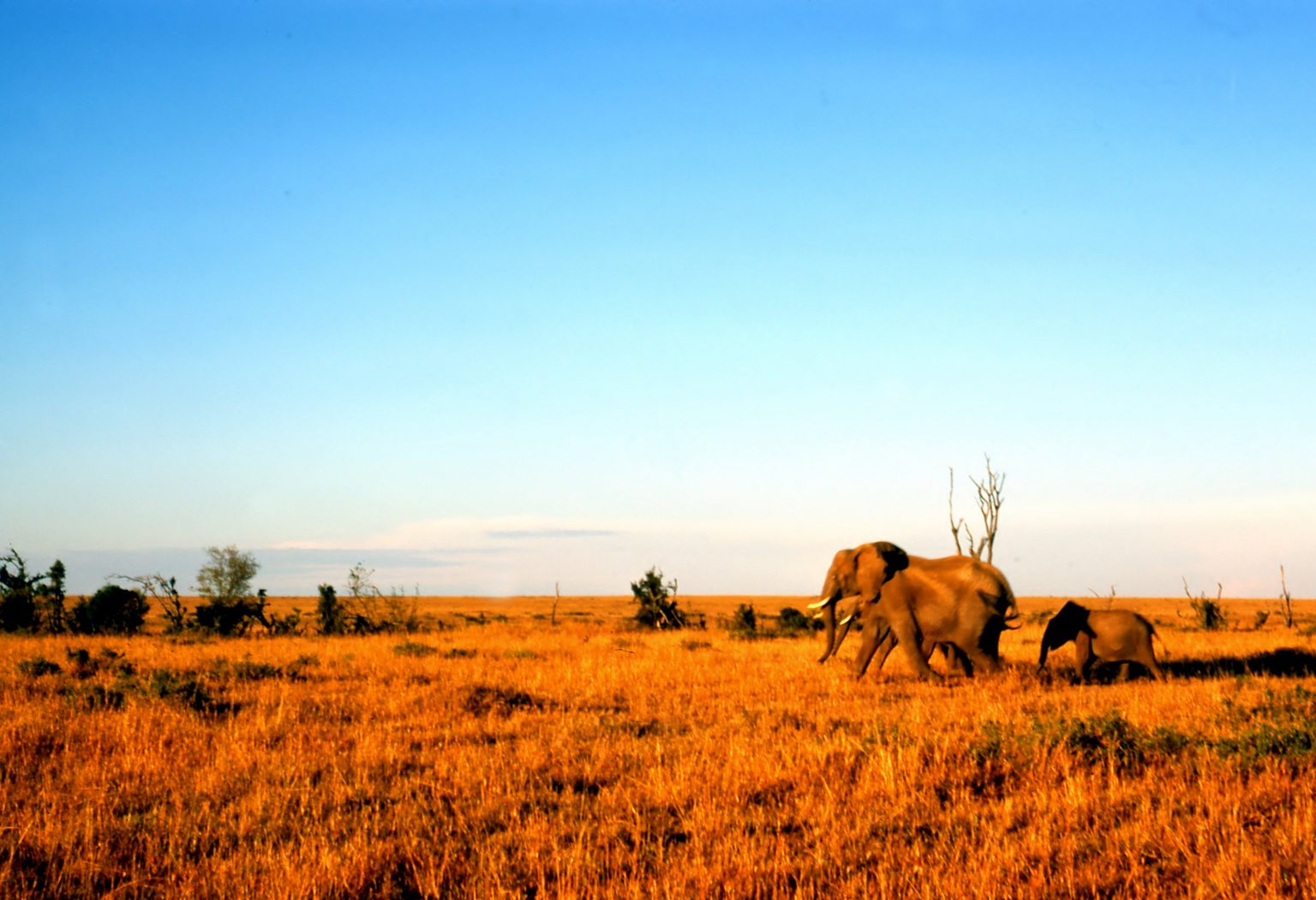What To Expect During A Wildlife Safari
Embarking on a wildlife safari in Kenya is more than just a vacation. It is an immersive adventure into one of the most biodiverse and iconic natural landscapes in the world. Kenya’s reputation as a premier safari destination stems from its diverse ecosystems, abundant wildlife, and unique cultural experiences. This comprehensive guide will walk you through what to expect during a wildlife safari in Kenya, from the planning stages to the heart-pounding moments of wildlife encounters.
Pre-safari preparations
1) Planning your safari
The first step in preparing for a wildlife safari in Kenya is selecting the right time to visit. Kenya’s climate and wildlife patterns vary throughout the year. The dry season, from June to October, is ideal for game viewing, as animals congregate around water sources and the sparse vegetation makes wildlife easier to spot. Conversely, the wet season, from November to May, offers lush landscapes and fewer tourists but may include heavy rains and challenging travel conditions.
2) Choosing a safari operator
Selecting a reputable safari operator is crucial for a successful safari experience. Look for operators with a strong track record in responsible tourism and conservation. They should offer experienced guides, well-maintained vehicles, and high standards of safety and customer service. Reading reviews and seeking recommendations can help ensure you choose a reputable company.
3) Packing essentials
Packing appropriately for a Kenyan wildlife safari involves a balance of comfort and practicality. Lightweight, breathable clothing in neutral colors is recommended to blend in with the environment. Essential items include a wide-brimmed hat, sunscreen, insect repellent, a good pair of binoculars, and a camera with a zoom lens. Also, bring a reusable water bottle and any personal medications you may need.
4) Health and safety precautions
Before traveling, consult with your healthcare provider regarding vaccinations and health precautions. Malaria prophylaxis may be recommended, depending on the region you will visit. It’s also wise to have comprehensive travel insurance that covers medical emergencies and trip cancellations.
Safari experience
1) Game drives
Game drives are the cornerstone of a wildlife safari in Kenya. Typically conducted in specially designed 4×4 vehicles, these drives provide a comfortable and elevated view of the landscape. Game drives usually take place early in the morning and late in the afternoon when wildlife activity is at its peak. Expect to traverse diverse terrains, from open plains to dense forests, as you search for a variety of wildlife.
2) Wildlife encounters
Kenya’s wildlife is renowned for its diversity and abundance. During a safari, you can expect to see the Big Five—lion, leopard, elephant, buffalo, and rhinoceros—as well as other iconic species such as giraffes, zebras, and cheetahs. The Maasai Mara and Amboseli National Park are particularly famous for their large populations of these species. The Great Migration, an annual event involving millions of wildebeest and zebras, is a highlight if your visit coincides with this spectacle.
3) Bird watching
Bird enthusiasts will find Kenya to be a paradise, with over 1,000 bird species recorded. Key bird-watching locations include Lake Nakuru, known for its flamingos, and the dense forests of the Aberdare Range. The diverse habitats across Kenya support a wide variety of bird species, including raptors, waterfowl, and colorful songbirds.
4) Guided walks
In addition to game drives, many safari operators offer guided walking safaris. These walks provide a more intimate experience of the bush, allowing you to explore smaller details of the ecosystem such as animal tracks, plants, and insects. Walking safaris are typically conducted in the company of experienced guides who can provide insights into the natural world and ensure safety.
5) Cultural interactions
Kenyan safaris often include cultural experiences that offer insight into the local communities and their traditions. Visits to Maasai villages or interactions with local tribes provide a deeper understanding of Kenya’s cultural heritage. These encounters might involve traditional dances, storytelling, and demonstrations of local crafts.
Accommodation options
1) Luxury lodges
Kenya is home to numerous luxury lodges that offer high-end amenities and exceptional service. These lodges are often located in prime wildlife viewing areas and feature comfortable rooms or suites, gourmet dining, and private decks with stunning views. Some luxury lodges also offer exclusive experiences such as private game drives and spa treatments.
2) Tented camps
For a more immersive experience, many travelers opt for tented camps. These can range from basic to luxurious, with high-end tented camps providing comfortable beds, en-suite bathrooms, and elegant furnishings. Tented camps offer a closer connection to nature while maintaining a level of comfort and convenience.
3) Budget accommodations
Kenya also offers budget-friendly safari accommodations, including basic lodges and campsites. These options provide a more economical way to experience the country’s wildlife and landscapes without compromising on the essential elements of a safari.
Activities and special experiences
1) Hot air balloon safaris
For a unique perspective on Kenya’s landscapes and wildlife, consider a hot air balloon safari. Floating above the savannahs at sunrise offers breathtaking views and the opportunity to spot wildlife from the air. Balloon safaris are often followed by a celebratory breakfast upon landing.
2) Boat safaris
In regions with lakes or rivers, boat safaris offer a different angle for wildlife viewing. Lake Naivasha and the Tana River are popular spots for boat safaris, where you can observe hippos, crocodiles, and various bird species from the water.
3) Night drives
Some safari operators offer night drives, which provide a chance to see nocturnal wildlife that is not active during the day. Spotting animals such as leopards, hyenas, and owls can be an exciting addition to your safari experience.
4) Conservation and community projects
Engaging in conservation and community projects can add a meaningful dimension to your safari. Participating in activities such as tree planting, wildlife monitoring, or visiting local schools helps support conservation efforts and community development.
Wildlife behaviour and viewing tips
1) Understanding animal behaviour
Gaining an understanding of animal behavior enhances the safari experience. For instance, observing predator-prey interactions, such as a lion stalking its prey or a herd of elephants feeding, adds depth to your wildlife encounters. Guides often provide valuable insights into animal behaviour, helping you interpret what you see.
2) Respecting wildlife
Maintaining a respectful distance from wildlife is crucial for both your safety and the well-being of the animals. Follow your guide’s instructions and avoid making sudden movements or loud noises that could disturb the animals. Responsible wildlife viewing ensures a positive experience for both visitors and wildlife.
3) Photography tips
Capturing the beauty of Kenya’s wildlife and landscapes requires some preparation. Use a camera with a zoom lens to get close-up shots of distant animals. Pay attention to lighting conditions, particularly during early morning and late afternoon when the light is softer. Remember to respect the environment and wildlife while taking photographs.
Health and safety considerations
1) Health precautions
Staying hydrated and using insect repellent is important for health and comfort during a safari. Protect yourself from the sun with sunscreen, a hat, and sunglasses. Be aware of the risk of diseases such as malaria, and follow any medical advice provided by your healthcare provider.
2) Safety guidelines
Safaris are generally safe, but it’s important to adhere to safety guidelines. Listen to your guide’s instructions, especially during walking safaris or night drives. Ensure that your safari operator provides a well-maintained vehicle and that safety equipment, such as first-aid kits and communication devices, is in place.
Impact of safaris on conservation and local communities
1) Supporting conservation efforts
Many safari operators contribute to conservation projects that protect wildlife and their habitats. By participating in a safari, you support these initiatives and help fund anti-poaching efforts, habitat restoration, and wildlife research.
2) Promoting sustainable tourism
Sustainable tourism practices are central to preserving Kenya’s natural and cultural heritage. Choose operators that prioritise eco-friendly practices, such as reducing plastic waste, conserving water, and supporting local conservation programs.
3) Enhancing community well-being
Safari tourism provides economic benefits to local communities through employment opportunities and revenue sharing. Engaging with community projects and supporting local businesses helps ensure that tourism contributes positively to the well-being of the communities you visit.
A wildlife safari connects you to nature
A wildlife safari in Kenya offers an extraordinary blend of adventure, education, and cultural enrichment. From witnessing the Great Migration in the Maasai Mara to exploring the unique landscapes of the Rift valley, Kenya’s safaris provide unparalleled opportunities to connect with nature and experience the rich diversity of wildlife. By understanding what to expect during your safari and preparing thoughtfully, you can ensure a memorable and impactful adventure that supports conservation and community development. Whether you’re tracking the Big Five, engaging in cultural interactions, or simply soaking in the breathtaking scenery, a safari in Kenya promises to be an unforgettable journey into the heart of Africa’s wilderness.





